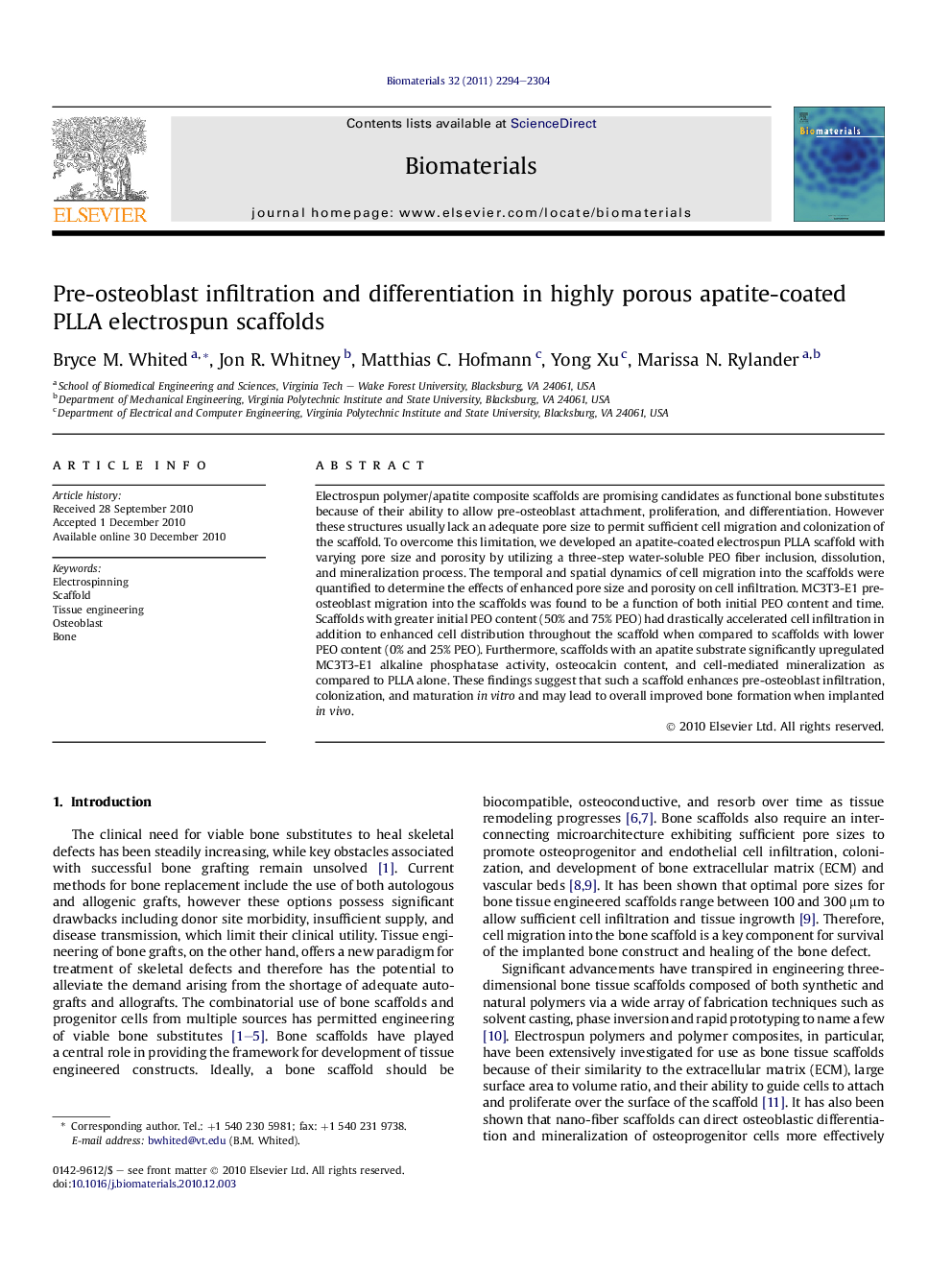| Article ID | Journal | Published Year | Pages | File Type |
|---|---|---|---|---|
| 7417 | Biomaterials | 2011 | 11 Pages |
Electrospun polymer/apatite composite scaffolds are promising candidates as functional bone substitutes because of their ability to allow pre-osteoblast attachment, proliferation, and differentiation. However these structures usually lack an adequate pore size to permit sufficient cell migration and colonization of the scaffold. To overcome this limitation, we developed an apatite-coated electrospun PLLA scaffold with varying pore size and porosity by utilizing a three-step water-soluble PEO fiber inclusion, dissolution, and mineralization process. The temporal and spatial dynamics of cell migration into the scaffolds were quantified to determine the effects of enhanced pore size and porosity on cell infiltration. MC3T3-E1 pre-osteoblast migration into the scaffolds was found to be a function of both initial PEO content and time. Scaffolds with greater initial PEO content (50% and 75% PEO) had drastically accelerated cell infiltration in addition to enhanced cell distribution throughout the scaffold when compared to scaffolds with lower PEO content (0% and 25% PEO). Furthermore, scaffolds with an apatite substrate significantly upregulated MC3T3-E1 alkaline phosphatase activity, osteocalcin content, and cell-mediated mineralization as compared to PLLA alone. These findings suggest that such a scaffold enhances pre-osteoblast infiltration, colonization, and maturation in vitro and may lead to overall improved bone formation when implanted in vivo.
